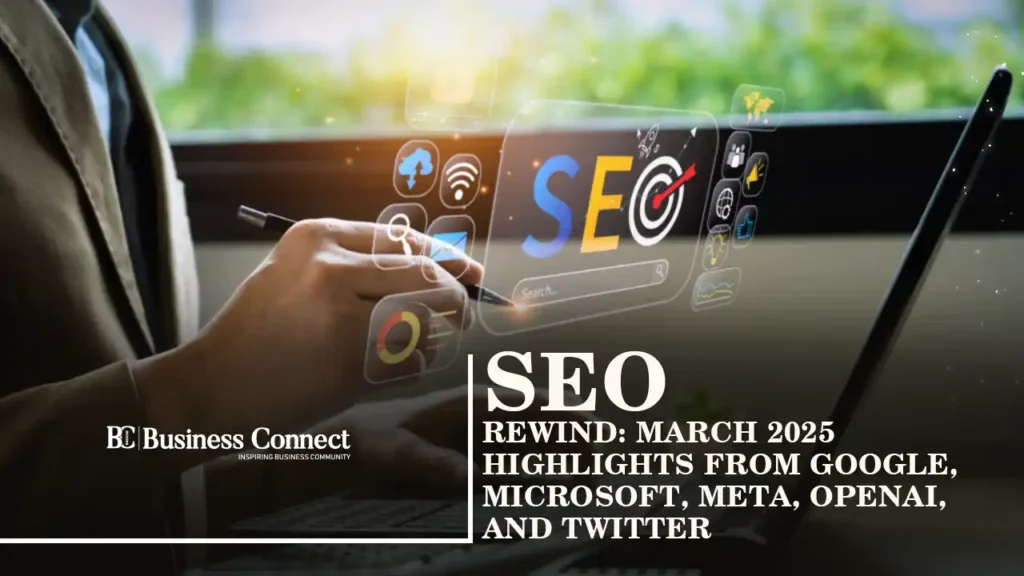By Anurag Tiwari
Welcome to the March 2025 SEO Rewind! As the digital landscape continues to evolve at breakneck speed, last month brought a flurry of game-changing updates from the titans of tech—Google, Microsoft, Meta, OpenAI, and Twitter (yes, I still call it that!). From AI-driven search innovations to social media’s growing influence on rankings, here’s everything you need to know to stay ahead in the SEO game. Let’s dive in!
SEO Rewind: March 2025 Highlights from Google, Microsoft, Meta, OpenAI, and Twitter
Google: AI Overviews Go Global, Lens Gets Smarter
Google kicked off March 2025 by expanding its AI Overviews (AIOs) to over 50 new countries, cementing its dominance in the search arena. First teased in 2024, AIOs now appear in 80% of search queries worldwide, blending real-time web data with Gemini’s advanced reasoning capabilities. For SEOs, this means a sharper focus on structured content—think concise answers, clear headings, and schema markup—to snag those coveted AIO spots.
But the real showstopper? Google Lens upgrades. The iOS app now lets users highlight screen sections for instant visual searches, while desktop users get AI-powered “novel image” recognition. Imagine pointing your camera at an obscure gadget and getting an AIO with reviews, pricing, and buy links—all in seconds. For e-commerce sites, optimizing product images with alt text and metadata has never been more critical. Google’s mantra? “Search is visual, and AI is the lens.”
Microsoft: Bing’s ChatGPT Integration Levels Up
Microsoft isn’t sitting quietly. In March 2025, Bing rolled out a beefier integration of OpenAI’s ChatGPT, now powered by the GPT-4o architecture. Unlike Google’s broad AIOs, Bing’s chatbot focuses on conversational depth—think full-paragraph answers with citations pulled from the latest web data. Early reports suggest a 15% uptick in Bing’s search market share since January, nibbling at Google’s heels.
For SEOs, this means dual optimization: traditional keyword-rich pages for ranking, plus natural-language content to feed Bing’s chat responses. Microsoft also teased a “Copilot for Ads” tool, blending AI insights with Bing Ads to boost ROI. If you’re ignoring Bing in your SEO strategy, March 2025 is your wake-up call.
Meta: AI-Powered Feeds Reshape Social SEO
Meta made waves in March with its “Smart Feed” update across Facebook and Instagram. Leveraging its AI models, Meta now curates feeds based on user intent, not just engagement. Searched for “sustainable fashion” lately? Your feed will prioritize eco-friendly brands and creators, complete with shoppable tags.
The SEO twist? Meta’s algorithm now weighs external links more heavily, boosting posts that drive traffic to high-quality sites. For businesses, this means syncing your Meta presence with your website’s SEO goals—think keyword-aligned captions and authoritative backlinks. With rumors of a Meta-OpenAI partnership swirling (thanks, Reliance talks!), expect even tighter AI integration by year-end.
OpenAI: SearchGPT Takes Flight
OpenAI dropped a bombshell in March 2025: SearchGPT, its AI-powered search engine, exited beta and went live globally. Unlike ChatGPT’s static knowledge base, SearchGPT pulls real-time web data, delivering concise answers with source links. Early adopters report a 1.5% slice of the search market—small, but growing fast.
For SEOs, SearchGPT’s citation-heavy approach is a goldmine. Sites with unique insights and primary data are seeing referral traffic spikes, while thin content gets buried. OpenAI also hinted at a “Publisher Boost” program to reward cited sites with visibility perks. My tip? Double down on E-E-A-T (Experience, Expertise, Authoritativeness, Trustworthiness)—SearchGPT loves it.
Twitter: Musk’s X Search Gets a Reboot
Elon Musk’s X (still Twitter to me) unveiled a revamped search engine in March 2025, powered by a custom AI dubbed “TruthSeeker.” Designed to cut through noise, it prioritizes verified accounts and trending topics, sidelining spam. The catch? It’s now a core driver of X’s ad revenue, with sponsored tweets dominating top results.
For SEO pros, this means X is more than a backlink playground—it’s a traffic funnel. Optimize your profile with keywords, pin high-value threads, and ride trending hashtags to boost visibility. With ad revenue stabilizing post-2023’s chaos, X’s search could rival Google for real-time queries by 2026.
What This Means for Your SEO Strategy
March 2025 was a wake-up call: AI isn’t just shaping search—it’s rewriting it. Here’s how to adapt:
- Google: Target AIOs with concise, structured content and amp up visual SEO for Lens.
- Microsoft: Craft conversational, authoritative pages to feed Bing’s chatbot.
- Meta: Align social posts with website keywords and link to quality content.
- OpenAI: Build E-E-A-T-rich pages to snag SearchGPT citations.
- Twitter: Leverage X’s search with keyword-smart profiles and timely posts.
The future of SEO is multi-platform and AI-driven. Start experimenting now, or risk being left behind. What’s your take on these updates? Drop a comment below, and let’s chat!
Add Business Connect magazine to your Google News feed



